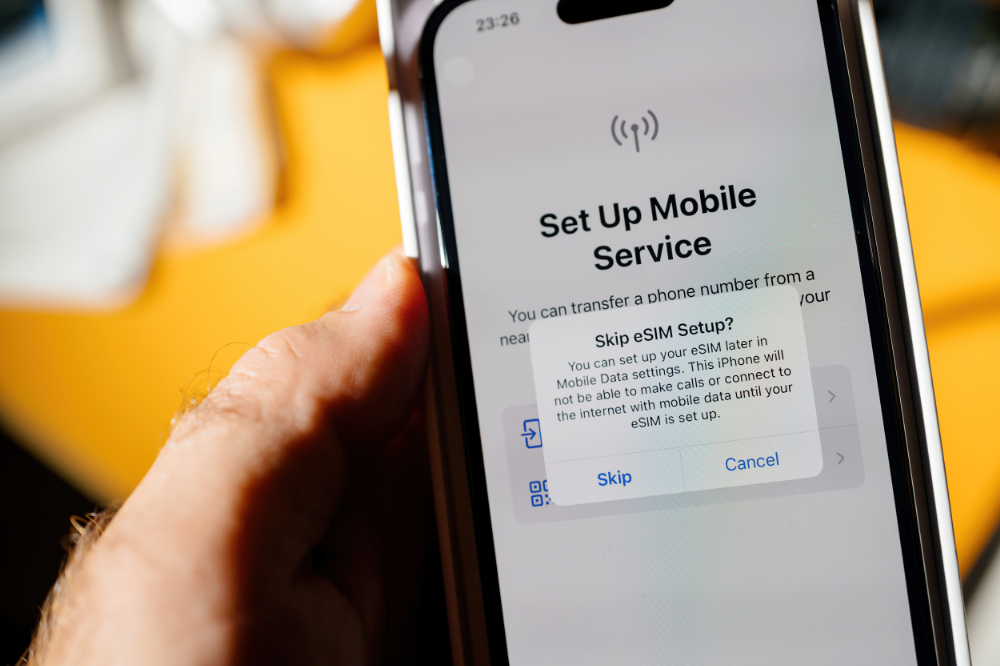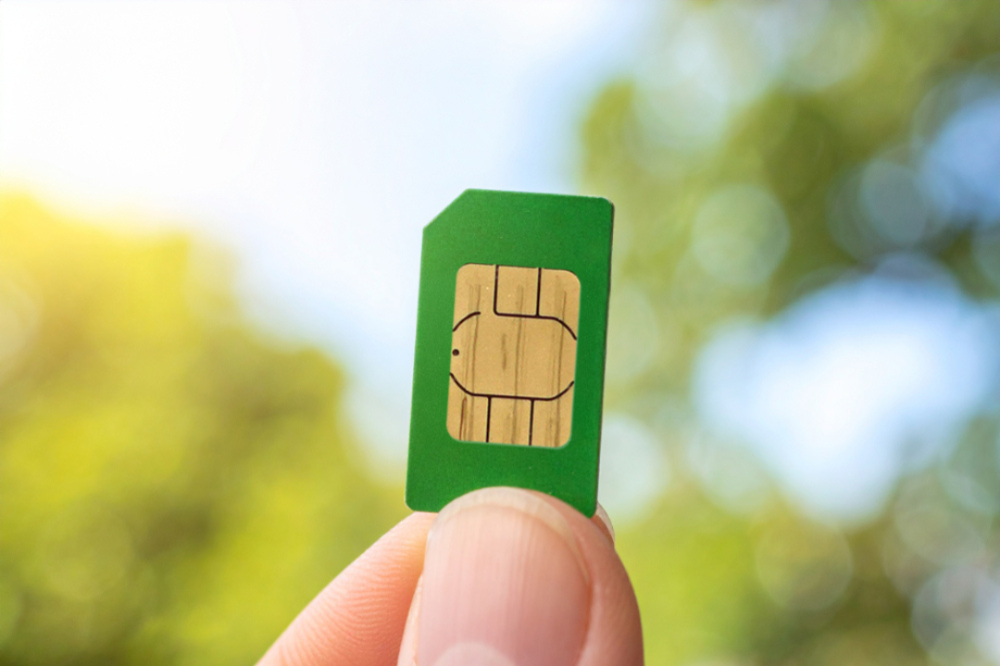Best eSIMs for Japan 2025: How to Choose the Right eSIM for Your Trip

While planning a trip to Japan should be exciting, choosing the right eSIM for said trip can prove to be a challenge. An eSIM, or embedded SIM, is a digital SIM built into compatible smartphones, enabling users to activate a mobile plan without the need for a physical card. It provides immediate connectivity, allowing the travelers to access all the necessary apps as soon as they arrive—such as maps, translation tools, and messaging services. However, with numerous providers, plans, and pricing structures available, it is easy to become overwhelmed. The most affordable option is not always the most suitable; factors such as coverage and flexibility can significantly influence the overall experience. So how should one go about comparing eSIM options?
This guide outlines precisely what to look for when selecting the best eSIM for Japan, ensuring travelers are fully prepared for their trip with a reliable and convenient mobile connection always at their fingertips.
What to Look for in the Best Japanese eSIM

Before comparing providers, travelers must confirm that their smartphone is both unlocked and compatible with eSIM technology. Once compatibility is assured, the following criteria may guide the selection process.
Strong Signal
Firstly, consistent network coverage is essential for a smooth travel experience. A high-quality eSIM should offer stable connections across Japan’s major cities as well as more rural areas, supporting reliable navigation, instant messaging, and uninterrupted video calls wherever your trip takes you.
Flexible Plans
Secondly, it is essential to note that data needs vary widely depending on the length of stay and travel style of each tourist. The best Japanese eSIM providers should therefore offer a range of options, including plans tailored to short visits, extended stays, or high-data usage. Travelers should also consider whether the plan allocates data on a daily basis or as a total allowance for the entire validity period.
Best eSIM with Calls for Japan
On a side note, certain travelers might be looking for voice eSIMs when comparing plans. Yet, while some providers offer eSIMs with voice calling capabilities, most short-term travelers will find that internet-based communication is more practical. Applications such as WhatsApp, LINE, or Messenger are widely used and provide a more cost-effective way to make calls, send messages, and share media without the need for traditional voice service.
Local Support
Thirdly, access to responsive, English-speaking customer support can make a significant difference when technical issues arise. Having a local team implies faster assistance, more accurate information, and the ability to address concerns that may occur while navigating Japan’s mobile networks.
It is especially true if you do not understand Japanese and have never been to the country before. For example, if your eSIM fails to activate after installation. Suppose you are connected to your hotel’s WiFi. In that case, you can contact an English-speaking representative for guidance to ensure the problem is resolved before you leave for the day, thereby avoiding disruptions to your itinerary.
How NINJA WiFi Meets These Needs
NINJA WiFi is a Japanese provider that addresses all of the above requirements. Our eSIM service offers dependable nationwide coverage through Japan’s leading carriers—Docomo and Softbank, ensuring stable connectivity in both urban and rural areas. Additionally, our broad selection of plans accommodates a variety of stay lengths and data needs, ranging from short city trips to month-long journeys. Travelers also benefit from an English-speaking support team, reducing the stress of troubleshooting while abroad.
How to Buy and Activate the Best eSIM for Japan

Securing the best eSIM for Japan involves more than selecting a provider—it requires proper preparation before departure. Here’s what you need to know:
Buying an eSIM Online Before Your Trip
Purchasing an eSIM in advance is one of the most effective ways to guarantee uninterrupted mobile connectivity as soon as you arrive in Japan. The process can be completed entirely online with most providers, including NINJA WiFi, removing the need for any in-person pickup or physical SIM card installation. A fully online approach is particularly advantageous for travelers arriving on late-night or early-morning flights, as it eliminates the need to locate an open store or service counter.
As mentioned earlier, the first step is to confirm your smartphone’s eSIM compatibility and unlocked status. Once verified, select a plan that matches your travel itinerary, data usage habits, and budget. For example, travelers who frequently use navigation apps but limit their streaming may find a mid-range data allowance sufficient. At the same time, those who rely heavily on video calls or regularly upload high-resolution content may require higher-capacity plans.
NINJA WiFi offers a wide selection of eSIM packages tailored to various trip lengths and data needs, including:
- 5-day plans: 5GB for 3,102 yen, 10GB for 4,499 yen, 20GB for 5,599 yen
- 7-day plans: 10GB for 4,609 yen, 30GB for 6,699 yen, 50GB for 8,503 yen
- 15-day plans: 10GB for 5,104 yen, 30GB for 7,557 yen, 50GB for 11,550 yen
- 31-day plans: 10GB for 5,599 yen, 50GB for 13,156 yen, 100GB for 18,403 yen
After choosing the most appropriate plan, payment can be completed securely online with a credit card—quick and straightforward.
Installing and Activating Your eSIM
Once payment is confirmed, the provider emails a unique QR code that contains the eSIM profile. The installation process is straightforward:
- Open the smartphone’s camera or the dedicated eSIM setup option in the network settings.
- Scan the QR code to download the profile directly onto the device.
- Assign the eSIM as the primary data line in the phone’s settings, ensuring it is selected for mobile data usage.
Most travelers can complete the activation within minutes, and the connection is typically ready to use immediately upon landing in Japan. For additional peace of mind, it is advisable to download the provider’s support instructions or save the QR code in multiple locations, such as cloud storage or an email backup, in case reinstallation is needed during the trip.
eSIM vs. Pocket WiFi vs. SIM Card: Which Is Best for Japan Travel?

If you’re unsure whether an eSIM is the right choice for your trip, understanding the strengths and limitations of other options should help you select the most reliable and cost-effective way to stay connected during your time in Japan.
Why Some Travelers Still Choose Pocket WiFi
While eSIMs are highly convenient, pocket WiFi devices remain a practical option for certain travelers. A single device can connect multiple phones, tablets, or laptops at once, making it cost-effective for groups or families. Pocket WiFi also works with devices that are not eSIM-compatible, such as older smartphones.
NINJA WiFi offers additional advantages for pocket WiFi users, including pickup counters at 10 different Japanese airports, delivery services, and the option to return the device to a different location from where it was collected. For example, it is possible to pick up a unit in Hokkaido and return it in Okinawa. Such flexibility is especially valuable for travelers exploring multiple regions without having to retrace their route.
When a Physical SIM Card Makes Sense
A traditional SIM card may be the best choice for solo travelers using older smartphones that do not support eSIM technology. It can also be a practical solution for visitors who are unfamiliar with eSIMs and prefer a technology they are already familiar with.
Choosing the Best Option for You
- Solo travelers with modern smartphones: An eSIM is often the most convenient choice, as it offers immediate activation without the need to pick up or return any equipment. This option eliminates the need to carry an additional device or worry about battery life, making it ideal for travelers who prefer to travel light.
- Families or groups: A pocket WiFi device can be the most economical and practical solution when traveling with multiple people. One device can connect several devices, allowing everyone in the group to stay online without purchasing individual plans. Shared usage can significantly reduce the cost per person, and with NINJA WiFi’s airport pickup and return flexibility, it is easy to coordinate across different arrival and departure points.
- Travelers with older devices: A physical SIM card remains a dependable option for those whose phones are not eSIM-compatible. Installation is simple, and SIM cards are widely available both online and in Japan. While it may not provide the same instant setup as an eSIM, it still offers a secure and reliable connection for essential tasks such as translation and messaging.
Conclusion
While many travelers now prefer the convenience of eSIMs for their instant activation and no-physical-device setup, pocket WiFi units and traditional SIM cards still have their place, particularly for groups or those with older devices. The best choice ultimately depends on the device you are using, the duration of your travel in Japan, your data needs, and whether you value the ability to connect multiple devices simultaneously.
For those with compatible smartphones, a high-quality eSIM provides the perfect balance of flexibility, speed, and convenience—especially when paired with reliable coverage and English-speaking customer support. Providers such as NINJA WiFi combine nationwide connectivity with a wide range of plan options, making it easier to tailor your data plan to your trip. By preparing your connection in advance, you can focus on enjoying Japan’s rich culture, cuisine, and scenery without the stress of searching for public WiFi or the high fees associated with international roaming. Secure your data plan now and experience Japan with reliable, high-speed internet at your fingertips.








